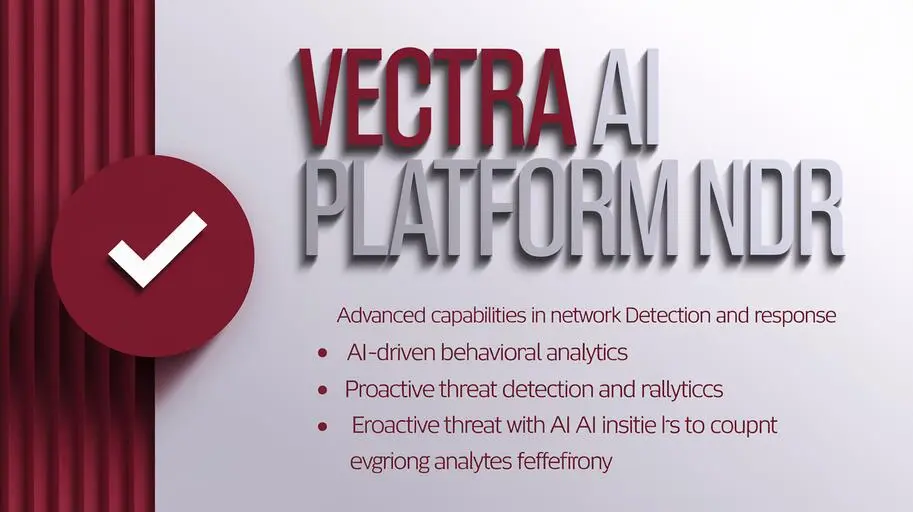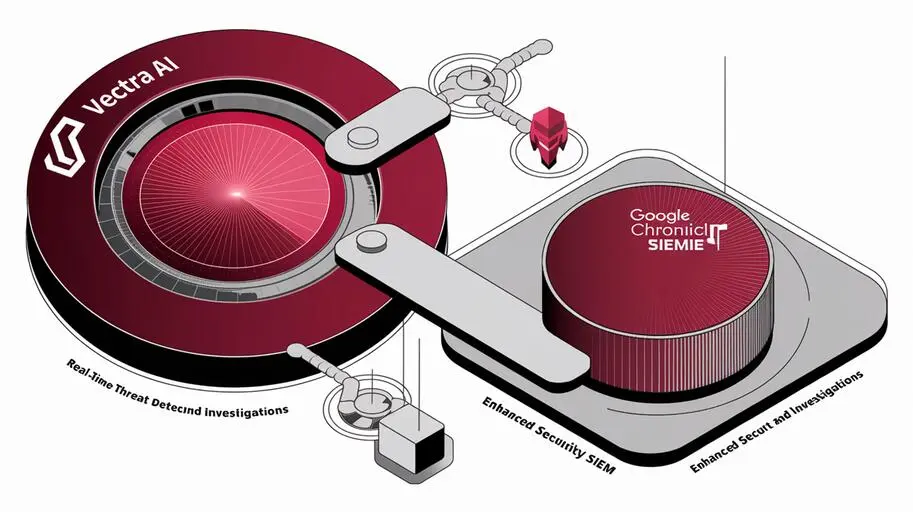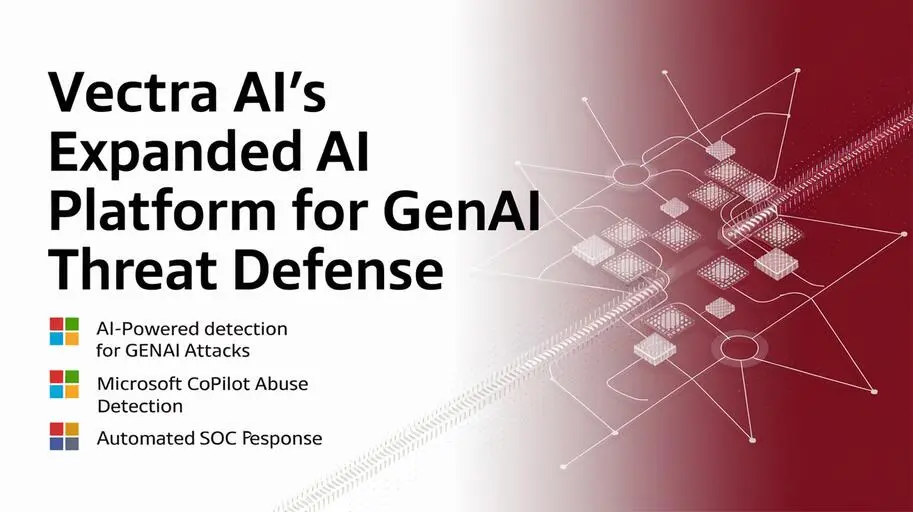
Cybersecurity is a battlefield where specialists face a massive flow of data and alerts every day. Amidst this information noise, it is crucial to recognize real threats in time. The Vectra AI platform, thanks to its Attack Signal Intelligence (ASI) system, allows you to separate the “signal” from the “noise”, providing effective threat prioritization and rapid incident response.
From Noise to Signal: Threat Prioritization with the AI-driven Vectra AI Platform
Cybersecurity teams have to sift through huge volumes of data every day, consisting of security system alerts, logs, network traffic, etc. This information overload leads to specialists spending a lot of time checking false positives, missing real cyberattacks. Fast and accurate threat prioritization is critical for effective incident response and minimizing damage. Vectra AI, and especially its Attack Signal Intelligence (ASI), solves this problem by using AI in cybersecurity to filter out irrelevant information and identify the most serious threats.
What is Attack Signal Intelligence (ASI) from Vectra AI?
Attack Signal Intelligence (ASI) from Vectra AI is a technology that uses AI and machine learning to automatically detect, analyze, and prioritize suspicious activity on the network. Unlike traditional security systems that generate many alerts, ASI focuses on identifying real signs of active cyberattacks. ASI analyzes data from various sources, including network traffic, logs, endpoint data, and cloud services, to build a complete picture of what is happening and identify hidden threats. The uniqueness of ASI lies in its ability to understand the context of attacks, identify chains of events, and assess the severity of the threat in terms of potential damage to the business. Learn more about Vectra AI’s use of AI and machine learning.
How Vectra AI (Attack Signal Intelligence) helps in filtering false positives
Vectra AI with Attack Signal Intelligence (ASI) uses advanced AI algorithms to analyze huge amounts of security data. AI analyzes data from various sources, including:
- System and application logs
- Network traffic
- Endpoint data
AI identifies anomalies and deviations from normal behavior that may indicate a cyberattack. Machine learning allows the system to adapt to changing conditions and improve its accuracy over time. The system also ranks events by severity, using AI-driven analysis. This allows security professionals to focus on the most important events and not waste time checking false positives. For example, the system may detect that a user who usually works from the office suddenly started downloading large amounts of data from abroad. A traditional security system might simply record the fact of data transfer. However, Attack Signal Intelligence (ASI) will analyze the context: time of day, amount of data, location, previous user activity, and other factors. If AI determines that this is anomalous behavior that may be related to account compromise, the system will generate a high-priority alert. If it is established that the user is on a business trip and is making a planned data transfer, the event will be classified as a false positive and filtered out.

Prioritizing Real Threats with AI
AI in Vectra AI not only identifies individual suspicious events, but also correlates them, identifying chains of attacks. The system analyzes the sequence of actions, identifies the connections between them, and reconstructs the course of the attack. The platform provides contextual information about threats, including:
- Assets affected by the attack
- Potential impact on the business
- Recommendations for response
This allows incident responders to focus on the most critical threats, saving time and resources.
For example, Attack Signal Intelligence (ASI) may detect that several suspicious events have been recorded on one of the servers: an attempt to exploit a vulnerability, network scanning, and downloading malicious software. These events themselves may seem insignificant. However, ASI can link them into an attack chain and determine that the attacker is trying to penetrate the system and gain access to confidential data. In this case, the system will generate a high-priority alert and provide security professionals with all the necessary information to respond to the threat, allowing them to effectively counter complex attacks, such as combating APTs. Learn more about detecting advanced threats with Vectra AI.
Benefits of Using Vectra AI for Threat Prioritization
Using Vectra AI for threat prioritization provides the following benefits:
- Reduce incident response time through automatic filtering of false positives and prioritization of real threats.
- Improving the efficiency of cybersecurity specialists, allowing them to focus on the most important tasks.
- Improved protection against cyberattacks by identifying and blocking threats at an early stage.
- Increased awareness of complex and hidden attacks that may go unnoticed by traditional security systems. How Vectra AI helps in investigations: provides a complete picture of what is happening and facilitates incident investigation.
- Saving resources through automation of prioritization and reducing the burden on security professionals. The implementation of Vectra AI allowed the company to reduce the time for making changes to security policies.
Conclusion
Vectra AI with Attack Signal Intelligence (ASI) allows cybersecurity specialists to move “from noise to signal”, focusing on real threats and effectively responding to incidents. This leads to more effective and efficient protection against cyberattacks. Contact us to get a personalized consultation on implementing Vectra AI and learn how it can help your organization.
Frequently Asked Questions about Vectra AI and Threat Prioritization
What is Vectra AI and how does it help in cybersecurity?
Vectra AI is a cybersecurity platform that uses Attack Signal Intelligence (ASI) to prioritize threats, filter out false positives, and enable rapid incident response.
What is Attack Signal Intelligence (ASI) from Vectra AI?
Attack Signal Intelligence (ASI) is Vectra AI's technology that uses artificial intelligence (AI) and machine learning to automatically detect, analyze, and prioritize suspicious activity on the network.
How does Vectra AI help filter out false positives?
Vectra AI uses advanced AI algorithms to analyze data from various sources (logs, network traffic, endpoint data) and identify anomalies, filtering out false positives and focusing on real threats.
How does Vectra AI prioritize real threats?
Vectra AI not only identifies suspicious events but also correlates them, identifying attack chains, analyzes the sequence of actions, identifies connections between them, and reconstructs the course of the attack. The system ranks events by severity using AI-driven analysis.
What are the benefits of using Vectra AI for threat prioritization?
Reduced incident response time, increased efficiency of cybersecurity professionals, improved protection against cyberattacks, increased awareness of sophisticated attacks, and resource savings.
What types of data does Vectra AI analyze to identify threats?
Vectra AI analyzes system and application logs, network traffic, endpoint data, and data from cloud services.
How does Vectra AI help in incident investigation?
Vectra AI provides a complete picture of what is happening, including attack context, affected assets, potential business impact, and response recommendations, which facilitates incident investigation.
How does Vectra AI differ from traditional security systems?
Unlike traditional security systems that generate numerous alerts, Vectra AI focuses on identifying real signs of active cyberattacks, using AI and machine learning to analyze context and prioritize threats.









